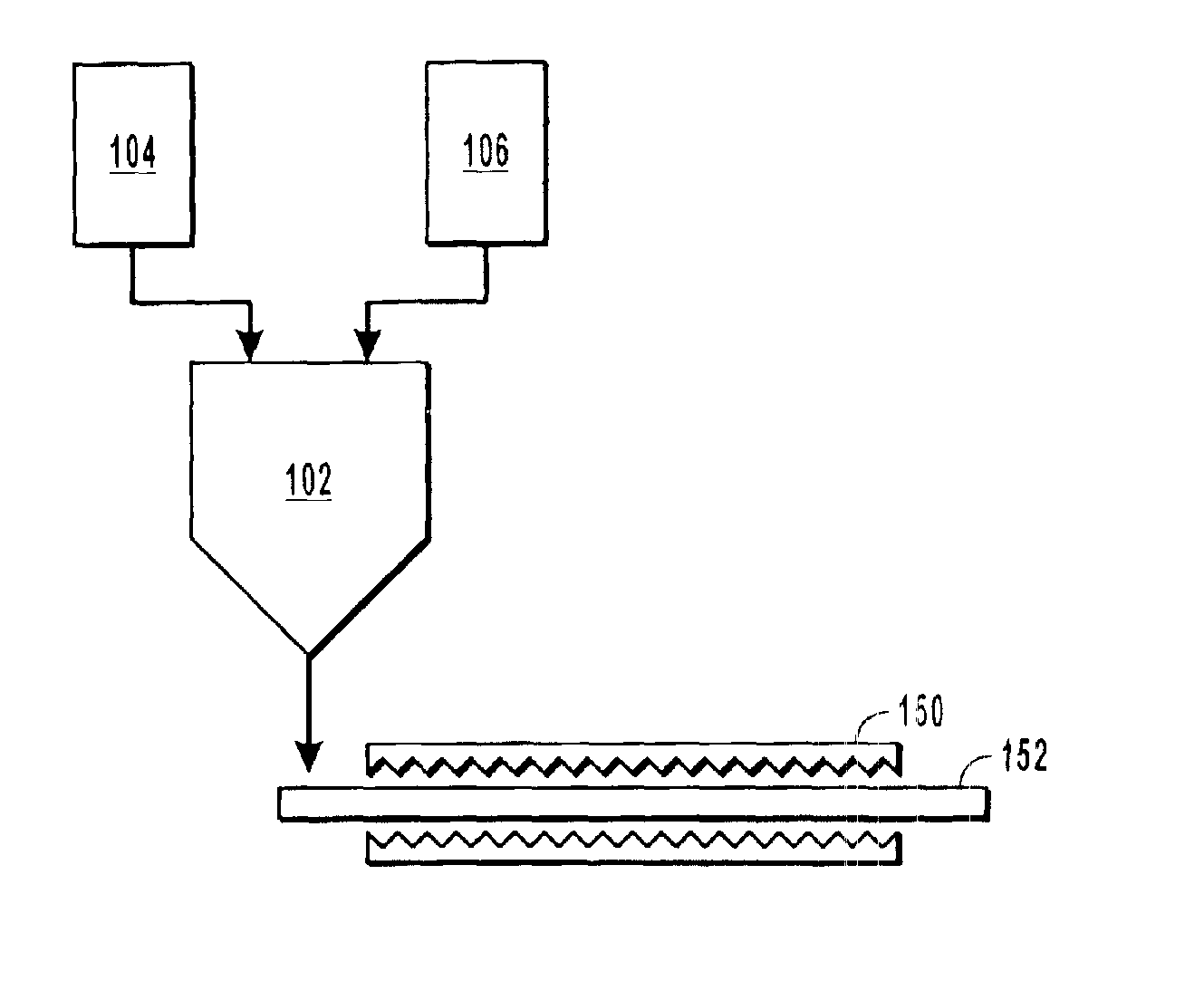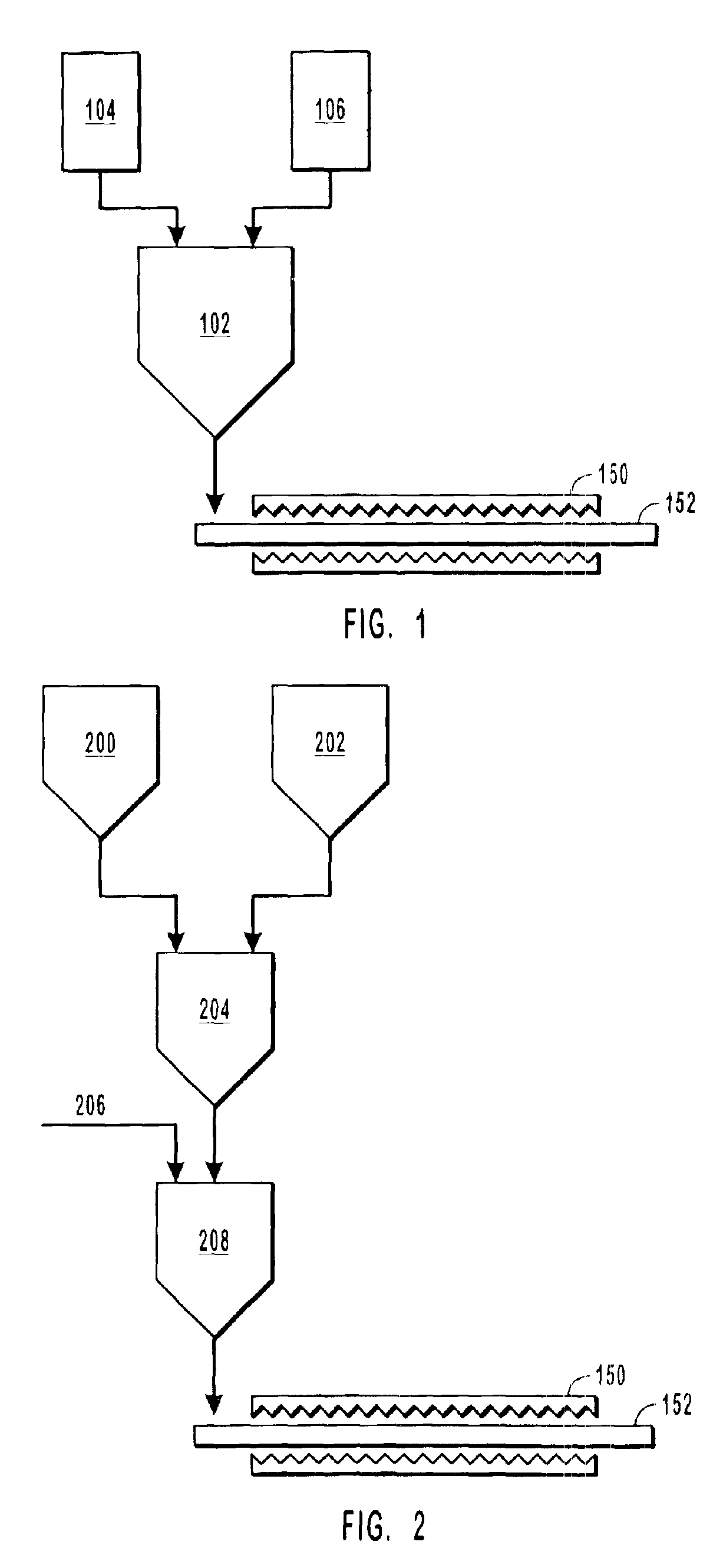Sulfur additives for paving binders and manufacturing methods
a technology of additives and binders, applied in sulfur preparation/purification, coatings, roads, etc., can solve the problems of difficult type of conventional asphalt-based materials, difficult softening and flow within a wide range of ambient temperatures
- Summary
- Abstract
- Description
- Claims
- Application Information
AI Technical Summary
Benefits of technology
Problems solved by technology
Method used
Image
Examples
example 1
Sulfur was heated and liquefied at a temperature of 140° C. (about 284° F.). The liquefied sulfur was treated with 0.25% amyl acetate and 0.5% carbon and within about five minutes the composition turned a shiny dark gray color indicating completion of the plasticization reaction of the sulfur. This plasticized sulfur was then cast into slate approximately 0.63 cm (about 0.25 in) thick. After cooling, the slate was broken up into pieces not bigger than forms which would have their length and width approximately equal to their thickness. AC-20 asphalt cement, aggregate and the plasticized sulfur were mixed with the overall composition of the asphalt cement containing approximately 2.7% AC-20 asphalt cement, 3.0% plasticized sulfur and 94.3% aggregate, and the mixture was found to have a stability of over 5400 pounds and a flow of 12 at 50 blows.
example 2
Plasticized sulfur was prepared as described in Example 1. AC-20 asphalt, aggregate and the plasticized sulfur were mixed with the overall composition of the asphalt cement containing approximately 2.0% AC-20 asphalt, 2.0% plasticized sulfur and 96% aggregate, and the mixture was found to have a stability of over 5800 pounds and a flow of 12 at 50 blows.
example 3
Plasticized sulfur was prepared as described in Example 1. AC-10 asphalt, aggregate and the plasticized sulfur were mixed with the overall composition of the asphalt cement containing approximately 3.0% AC-10 asphalt, 1.5% plasticized sulfur and 95.5% aggregate.
PUM
| Property | Measurement | Unit |
|---|---|---|
| Temperature | aaaaa | aaaaa |
| Temperature | aaaaa | aaaaa |
| Temperature | aaaaa | aaaaa |
Abstract
Description
Claims
Application Information
 Login to View More
Login to View More - R&D
- Intellectual Property
- Life Sciences
- Materials
- Tech Scout
- Unparalleled Data Quality
- Higher Quality Content
- 60% Fewer Hallucinations
Browse by: Latest US Patents, China's latest patents, Technical Efficacy Thesaurus, Application Domain, Technology Topic, Popular Technical Reports.
© 2025 PatSnap. All rights reserved.Legal|Privacy policy|Modern Slavery Act Transparency Statement|Sitemap|About US| Contact US: help@patsnap.com


